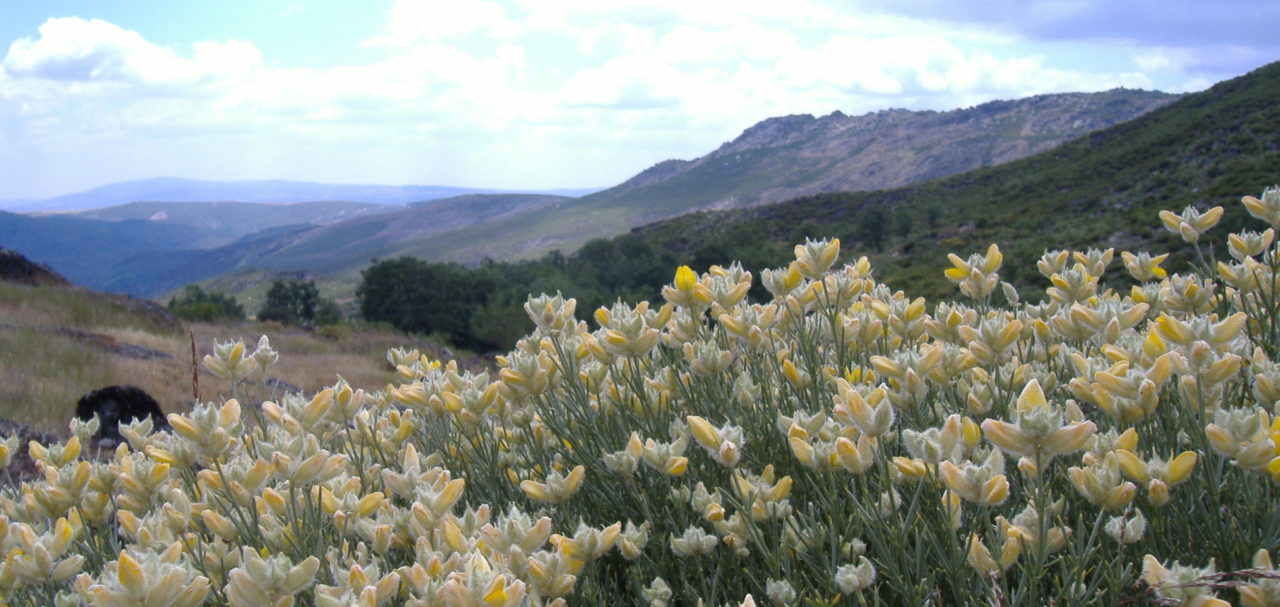… there are many, but for us there are two iconic and very different birds, birds we look for each day – the Nuthatch (Trepadeira-azul) and the Booted Eagle (Águia Calçada).
Whenever we are at our house in França we put out a bird feeder, much to the amusement of our neighbours, and hopefully delight of the many birds that use it. Soon after we started this practice a pair of Nuthatches (Trepadeira-azul) arrived. They became regular visitors. We put up a nest box in the walnut tree and within 12 hours they had taken it on. They nested there every year until 2019, and continue to be our boldest and most reliable garden visitor.

We’ve written about these birds and why we are so enamoured by them on our birding site : https://woodcockwood.com.



Booted Eagles are a relatively common summer migrant that can be seen throughout Spain and Portugal. They are recognised by the white leading edge to their wings. They are about the same size as the Common Buzzard (Águia-d’asa-redonda), and relatively easy to identify, although there is a dark phase Booted Eagle that can cause confusion.

The small back balcony of our house in França looks out across village gardens to low wooded hills, and there’s a chance of seeing one or both of the Booted Eagles at any time of the day from there.
They are likely to use the same nest year on year, and we think this pair have their’s situated in the woodland above Rabal, about 3 kilometres away.
Their displays can involve dramatic soaring and diving, but normally we see them circling low over the ridge and climbing high on thermals. They are beautiful to watch, and we are disappointed if we don’t see them at least once during the day.
The other raptors that we see frequently are the Common Buzzard (Águia-d’asa-rotunda) circling over hills towards the water pumping station where a pair have their territory, and Griffon Vultures (Grifo-comum), usually cruising very high during the middle of the day. Look at the small specs in the blue sky with binoculars, and they will almost certainly be Griffons.
How do you identify a tiny silhouette? If the tail is shorter than the breadth of the wing it will be a Vulture, and here the chances are it will be a Griffon. If the tail is longer, it will be some form of eagle.

Normally we see Griffons passing high overhead. But towards the end of September 2019 we were walking past the hípico in the evening when we saw several low flying Griffons slowly circling. Over the next hour their numbers grew until there were between 20 and 30 birds. There appeared to be no particular point where they were landing, but clearly there was a carcass of some sort taking their interest. They slowly drifted off over the course of a couple of days, but for that short time it was great to see these wonderful birds at close quarters so near to home.

Another bird you are likely to see in the village is the Black Redstart (Rabirruivo-comum), which would be a rarity in UK, but is a common bird in towns and villages in Portugal.

Pied Wagtails (Alvéola-branca) are common everywhere, but you might see the Grey Wagtail (Alvéola-cinzenta) along the Rio Sabor, especially in the shallows towards the hípico. We also occasionally see them in the village hunting for insects among the cobbles.
Serins (Milheirinha-europeia) are also common, making their distinctive twittering call from high points such as the electricity cables.
We sometimes hear and occasionally see the Greater Spotted Woodpecker (Pica-pau-malhado) exploring the old chestnut trees in the village. They are cautious birds, but show themselves in a flash of red, black and white.
We have twice seen a pair of Lesser Spotted Woodpeckers (Pica-pau-galego) in our walnut tree in the garden. But that is a rarity, here as everywhere.
Chaffinches (Tentilhão-comum) and Goldfinches (Pintassilgo) are quite common, and we occasionally see Linnets (Pintarroxo-de-bico-escuro) feeding on the cabbages that have been allowed to seed in gardens.

As regards songsters, we see and hear Blackcaps (Toutinegra-de-barrete) calling from high vantage points around the village, and we also hear nightingales in the distance, although they are more difficult to spot even close to. Up beyond he hípico is a good place to hear them during April and May, particularly on the downward part of the track – see description of walk: (https://livinginnortheastportugal.woodcockwood.com/?p=108).
The most evocative of the songsters is the Golden Oriole (Papa-figos) singing throughout the summer in the poplar trees – often heard but seldom seen.
Swallows and House Martins (Andorinhas) are always around, and in autumn they congregate in large numbers in readiness for migration. At this time of the year they will invariably be joined by Swifts.
The wonderful thing about the area is that you never know what might appear – Bee-eaters (Abelha-ruco) and Pied Flycatchers (Papa-moscas-preto) on autumn migration, once a Black Stork (Segona-preta) flying down the valley, Dippers (Melro-d’água) along the river, and the occasional sighting of a Kingfisher (Guarda-rios-comum) is always exciting.

And one evening, just past the Casa de Povo we saw an otter on the bank of the river carrying a large trout. It’s the only time we’ve ever seen one live!!
If you would like to follow up on some of these, we have written longer articles on:
- European Bee-eater: https://woodcockwood.com/the-european-bee-eater/
- Black Restart: https://woodcockwood.com/the-trauma-of-leaving-the-nest/
- Common Buzzards https://woodcockwood.com/the-common-buzzard/); https://woodcockwood.com/buzzards-at-the-nest/
- Eurasian Nuthatch: https://woodcockwood.com/the-eurasian-nuthatch/
